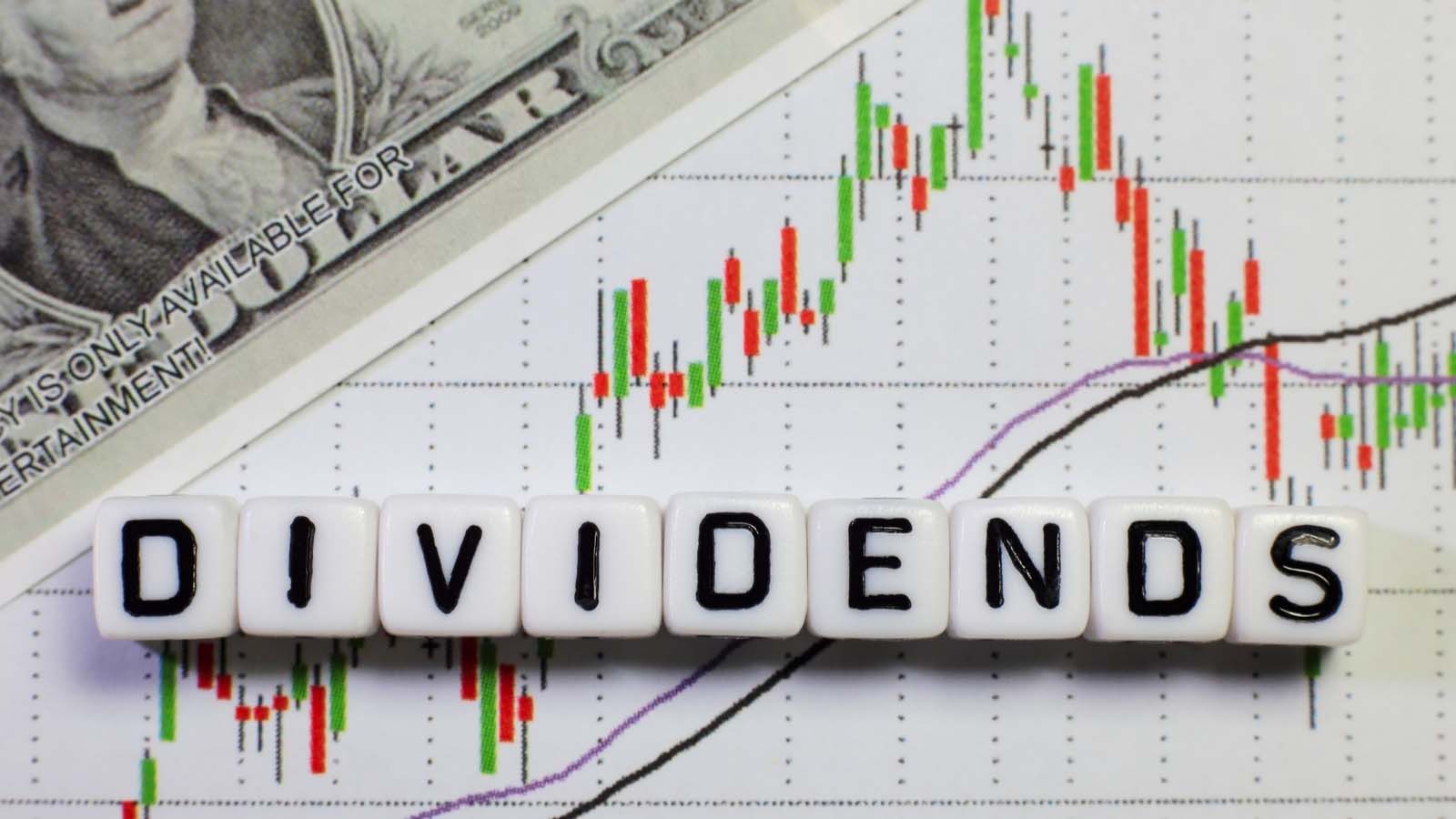I like high-yield dividend stocks that also have the ability to buy back their shares. These are called total yield dividend stocks. They offer investors attractive total returns.
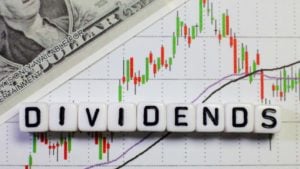
The amount of share buybacks during the year divided by the market value equals the buyback yield. By adding the dividend yield and the buyback yield, one can determine the total yield of a stock.
Together the dividends paid and stock repurchases represent the total amount of capital that returned to shareholders. Why is that?
The buyback yield represents a return of capital to shareholders just like the dividend yield. So combining the two is the total yield or return of capital to shareholders.
Some people balk at this notion that buybacks represent a return of capital to shareholders. But there are several reasons why share repurchases do represent a legitimate return to shareholders, just like dividends.
Benefits of a Total Yield Approach to Dividend Stocks
First, the amount of buybacks reduces the number of shares outstanding at a company. This has several beneficial effects. For one, it allows the company to pay higher dividends per share over time to the remaining shareholders. This is because the dollars spent on dividends is spread across a fewer number of shareholders.
In fact in most cases, companies that buy back shares over a period of years have faster dividend per share growth than their dividend outlay growth. Over time the per-share dividend growth can compounds faster this way.
Buybacks help the earnings per share to grow faster than otherwise. This grows the valuation of the stock.
Buybacks also push up the price of a stock, or at a minimum help it from falling. If the buyback program is continuous, it tends to act as a sort of price buffer.
I decided to look for companies with dividends and buybacks which, when added together, represent at least 8% of the market value of the stock. This means the stock has at least an 8% total yield. Some of these stocks have higher dividend yields and some have higher buyback yields. But when added together, that sum is greater than 8%.
High Total Yield Dividend Stocks: AbbVie (ABBV)
Dividend Yield: 5.45%

Buyback Yield: 2.87%
Total Yield: 8.32%
AbbVie (NYSE:ABBV) is a drug company. Its purchase of Allergan, expected to close shortly, will boost earnings and dividends and push AbbVie’s stock higher. Allergan is well known for its Botox and other beauty products. Analysts suggest that it will only take a few more months.
AbbVie is losing its patent protection on Humira, a rheumatoid arthritis treatment that accounts for more than half of AbbVie’s revenue.
But the company has indicated that there will be $2 billion in synergies with Allergan. Moreover, the combined earnings will be 10% higher during the first year.
ABBV has enjoyed consistent earnings and regular dividend growth, as can be seen in the chart above.
AbbVie also has a strong buyback program. In the last two years alone, the company has bought back over 12% of its present market cap. Buybacks in 2019 alone are estimated at $3.58 billion. This represents 2.87% of its market value.
So combined with the ABBV dividend yield, the total yield for the stock is 8.32%.
AT&T (T)
Dividend Yield: 5.50%

Buyback Yield: 2.94%
Total Yield: 8.44%
AT&T (NYSE:T) has stated very publically that it plans to pay out 8.5% annually over the next three years ending 2022 in both dividends and buybacks. In Q4 2019, the company started up on that program.
AT&T has made it clear that it wants to reduce 70% of the shares it used for the purchase of TimeWarner from its share buybacks over the next three years (plus one quarter – Q4 2019).
This past quarter (Q4 2019), AT&T bought back $2 billion worth of shares and paid $3.7 billion in dividends. That equals $5.7 billion in shareholder return payments.
Based on its market value of $276.421 billion at the beginning of Q4 (i.e. $37.84 x 7305 million shares), the $5.7 billion in shareholder return payments represents a “yield” of 2.06% for the quarter. That works out to an 8.5% total yield on a quarterly compounded basis.
As I pointed out in my recent article in Seeking Alpha on T, the stock is on track to deliver this annual 8.5% total yield for shareholders.
Delta Air Lines (DAL)
Dividend Yield: 2.73%
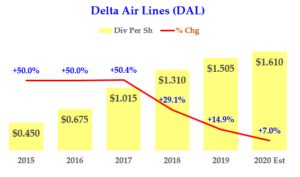
Buyback Yield: 5.43%
Total Yield: 8.16%
Delta Air Lines (NYSE:DAL) stock offers great value to investors. DAL stock has a great 2.73% dividend yield and a buyback yield of 5.3%. This represents an 8.16% total yield for investors.
Moreover, based on its latest financials, the company is likely to continue reducing its shares outstanding by over 5% annually. Delta’s buyback program is over $2 billion annually. That represents 5.43% of its present $37.3 billion market value.
This works because Delta generates very powerful free cash flow. For example, in the last 12 months ending December, DAL produced over $4.2 billion in FCF. That was an increase of over 128% from a year earlier.
In a recent article in Seeking Alpha, I show that DAL stock is likely to produce a 13% annualized total return for investors. This is due to its expected valuation gain from its buybacks and dividends.
Lam Research Corp (LRCX)
Dividend Yield: 1.41%
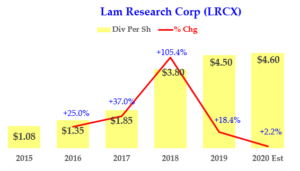
Buyback Yield: 8.63%
Total Yield: 10.04%
Lam Research (NASDAQ:LRCX) makes semiconductor processing and fabrication equipment. It turns out that LRCX stock benefits from the company’s very strong buyback program.
For example, in the past quarter, LRCX completed $1 billion in stock buybacks. On an annualized basis, that is a $4 billion buyback program. This works out to 8.63% of LRCX’s $46.3 billion market value.
So combined with LRCX’s 1.41% dividend yield, the total yield for shareholders is just over 10% per annum.
The company has made it clear that it will continue to complete its present $5 billion share buyback program. It has already done $3 billion so far. I expect that the Lam Research will announce a follow-on buyback program later this year.
In fact, based on my assumptions, I expect that LRCX stock is significantly undervalued. I wrote recently that the stock is worth $361 per share, or almost 11% more than today’s price.
Medifast (MED)
Dividend Yield: 4.41%
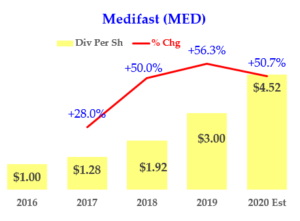
Buyback Yield: 3.99%
Total Yield: 8.40%
Medifast (NYSE:MED), the weight loss and nutritional products company, is both very profitable and committed to returning capital.
MED stock is cheap, trading with a 4.41% dividend yield and a 3.99% buyback yield. This gives it an 8.40% total yield for shareholders.
I estimate that MED stock is worth $163.76 per share, up 60.5% from its present price of $102.06 over the next three years. That represents an average annual price gain of 17.1% for the next three years.
For example, if you include the 4.41% dividend yield, assuming the yield stays at that level, MED stock’s total expected return is 21.5% per annum. That is a very attractive potential total return for shareholders.
This is possible because MED stock produces huge amounts of free cash flow. For example, in 2019 MED generated $69.5 million in FCF, up 24% over the prior year. I estimate that FCF will be up over 14% this year as well.
As a result, MED’s dividends have grown over 52% in the past three years. I expect MED will continue to have huge dividend growth in the coming years as a result of its FCF growth and buybacks.
Summary of These Total Yield Stocks
Here is a summary of the dividend, buyback and total yields of each of these stocks.

These five stocks provide an average total yield of 8.67%. That’s a very attractive potential return for shareholders.
As of this writing, Mark Hake, CFA does not hold a position in any of the aforementioned securities. Mark Hake runs the Total Yield Value Guide which you can review here. The Guide focuses on high total yield value stocks. Subscribers a two-week free trial.
